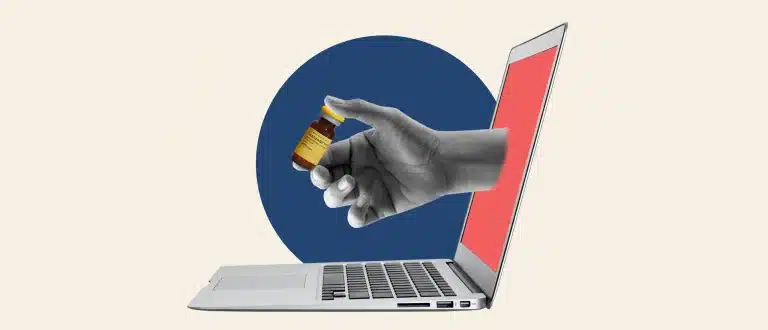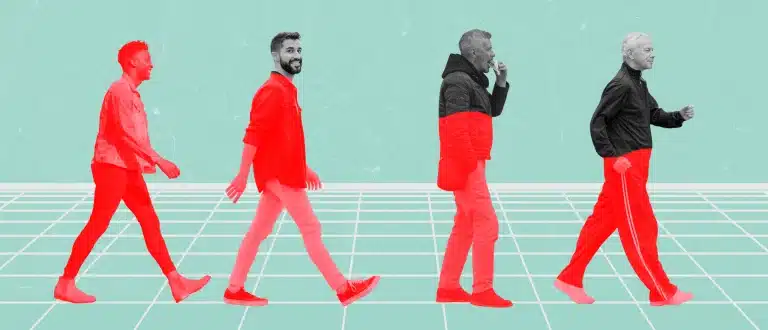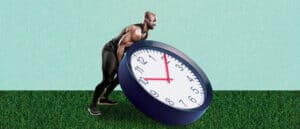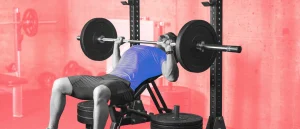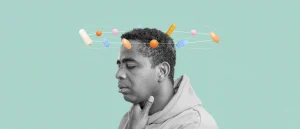Over 35? HRT for Men Could Be Your Secret Weapon
30-Second Takeaway
- While TRT focuses solely on managing testosterone levels, HRT for men encompasses more hormones, such as thyroid and growth hormone levels.
- There’s no set age when men should consider HRT, but symptoms of hormone deficiencies become more prevalent after 30.
At a certain age—usually over 30—male hormones begin to decline. The results of such imbalance can be downright awful: diminished libido, fatigue, weight gain, lack of drive, and more, according to family medicine physician Jim Staheli, D.O. It’s critical that you monitor your hormone health once you enter your thirties. Understanding where your hormone levels lie will help determine if, or when, you should begin hormone replacement therapy, or HRT for men.
What Is HRT for Men?
Hormone replacement therapy (HRT) for men is the therapeutic provision of synthetic hormones to replace those that are deficient naturally within the body, according to urologist Amy Pearlman, M.D.
In most cases, by effectively returning hormone levels to normal, male HRT can successfully combat the effects that are onset by hypogonadism, also known as low testosterone.
What Is Testosterone?
Before we can get into low testosterone, it’s important to define testosterone itself. Testosterone is the primary male hormone produced mainly from the testes, or testicles. The hormone drastically increases as males enter puberty and peaks by early adulthood. It’s responsible for a multitude of major bodily functions, including:
- Boosting the male libido, more commonly referred to as “sex drive”
- Producing sperm
- Maintaining a healthy bone density
- Building muscle mass and strength
- Generating and maintaining a healthy red blood cell count
- Decreasing inflammation
- Protecting your organs and brain
- Distributing fat
- Promoting the growth of body and facial hair
About the Experts:
Dr. James Staheli, D.O., is the Medical Director for Broad Health, Hone Health’s affiliated medical practice, and a family medicine doctor in Atlanta, Georgia who specializes in hormone treatment for men.
Dr. Amy Pearlman, M.D., is a board-certified urologist and hormone specialist with a sub-specialization in genital and urinary reconstruction, as well as male-specific quality of life concerns. She manages medical and surgical therapies for erectile dysfunction, penile curvature, testosterone deficiency, and genital reconstruction.
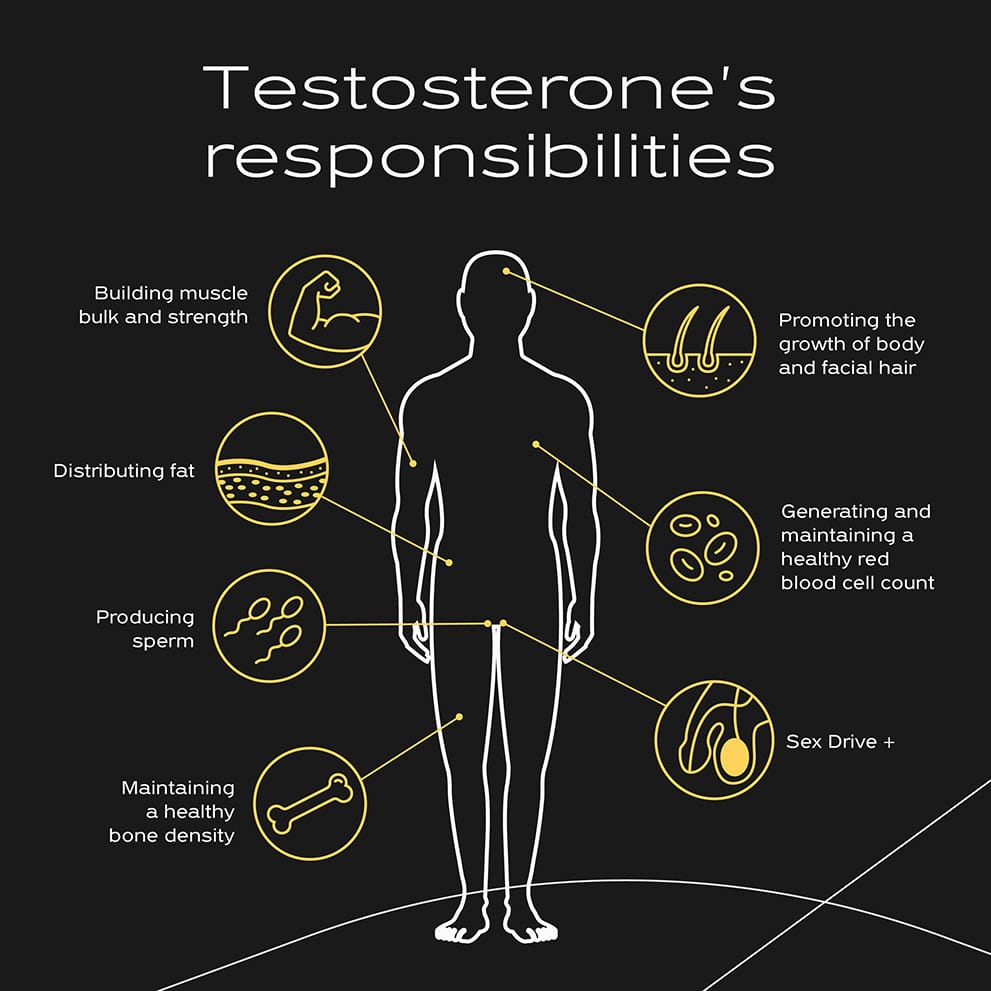
What Happens to Testosterone As You Age?
In short, it dips. Men over 30 lose between 1 to 1.5 percent of their natural supply of testosterone every year (1). It’s a slow and natural decline, though a decline nonetheless.
So, how does declining testosterone play into aging? Serum testosterone levels mostly drop when your aging testes increasingly become unable to produce enough of the hormone. Your body and brain gradually start to exhibit the effects—energy wanes, pounds begin to add on around the midsection, your mind and mood fluctuate more, and your appetite for sex diminishes.
How Is Your Life Affected by Hormone Imbalance?
If your hormone levels rapidly exceed their natural decline, you could be experiencing what’s known by too many men under several names: Andropause, aka male hypogonadism, aka low testosterone levels or “low T.”
More than one out of four men age 30 or older suffer with low testosterone. And it’s a growing concern—a study published in the Journal of Clinical Endocrinology & Metabolism reported that today’s average 30-year-old man has approximately 17 percent less testosterone (1) than a 30-year-old male at the start of the 21st century. A number of variables are attributable, but the end result remains consistent.
What Are Symptoms of Low T?
More research is needed to fully grasp the long-term impact that hormones have on health, though what has been studied to this point is alarming (2). First, there are the more commonly known symptoms of low T—according to Staheli and Pearlman—even though you or your loved ones may not notice them right away:
- Feelings of sadness, moodiness, irritability
- Difficulty enjoying life in general
- An increasing lack of energy levels and enthusiasm
- Weight gain and body fat redistribution, most notably around the midsection and/or breast tissue
- Loss of muscle, stamina and strength
- Decreased desire for sex or intimacy
- Diminished sperm volume
- “Brain fog,” or an inability to focus and think clearly
- Waning performance at work
- Some hair loss, or less growth in body and facial hair
- Trouble sleeping, feeling constantly tired
- Reduced ability in playing sports, exercising
- Increasing withdrawal from family, hobbies, going out
Low T has also been associated with numerous, sometimes severe health issues, notes Staheli, including increased risks of:
- Diabetes
- Cardiovascular disease, including heart disease and stroke
- Respiratory disease
- Osteoporosis, or the thinning of bone density, making you more prone to injury
- Depression
- Erectile dysfunction (ED)
- Decline in all-cause mortality
Let’s help you figure it out.
Order Hone’s at-home testosterone assessment today. It’s fast, simple, and you can do it from home. For one low price, you’ll get your blood analyzed by an accredited lab, a 30-minute audio/visual consultation with one of our doctors to go through your results, and any prescribed courses of treatment medications will be sent directly to you.
What’s Irritable Male Syndrome?
When hormones become unbalanced, men usually don’t realize it until they’ve exhibited a few or several of the above symptoms for some time. What may get noticed, though, either by yourself or those closest to you, is that you’ve developed a short fuse. Before, where you perhaps took things in stride, you’re now prone to rapid frustration and snapping at people.
This condition is known as irritable male syndrome—what many jokingly describe as “grumpy man syndrome”—though the clinical term is andropause, or male menopause. The truth is, even though the associated physical and emotional issues may not appear as prevalent or substantial as its feminine counterpart, andropause is a very real problem for guys. And it’s one that many men try to suppress for fear of ridicule or embarrassment. It’s very common, so they needn’t feel that way.
Men with andropause turn irritable because of a deficiency in their androgen levels, which are critical to their sexual and reproductive functionality. Chief among those androgens is testosterone, so when that falls below normal levels, the irritability can easily rise.
“Typically, when a man has low testosterone, the [stress] hormone cortisol increases,” Staheli notes. High levels of cortisol can contribute to irritability, anxiety, and depression.
Testosterone deficiency is typically treated through hormone replacement, while androgen replacement therapy (ART) may also utilize aromatase inhibitors, chrysin, pregnenolone, dehydroepiandrosterone (DHEA), dihydrotestosterone (DHT), zinc, selenium, and other supplements. Measuring your androgen hormone levels is the way to determine if HRT is a viable option.
“Optimizing hormones may benefit a man’s mood alone or in combination with other [mental health] therapies,” Pearlman says.
How Do You Measure Your Hormone Levels?
So, how do you find out where your hormone levels are and where they should be? Here’s where Hone can help.
Hone offers an at-home hormone test in which you can easily collect a sample and mail it to a Hone-affiliated lab.
The labs, which are accredited by the Clinical Laboratory Improvement Amendments (CLIA) and, where applicable, by the College of American Pathologists (CAP), will measure your levels of total and free testosterone, Sex Hormone Binding Globulin (SHBG), albumin, estradiol, luteinizing hormone (LH), liver enzymes, and prostate-specific antigen (PSA).
How Do You Know If HRT Is Right for You?
Good candidates for HRT are men experiencing symptoms of hormonal imbalance, such as reduced energy, fatigue, reduced lean muscle mass, obesity, depressive symptoms, cognitive dysfunction, irritability, or reduced sex drive, notes Pearlman. “Men with these symptoms in addition to low testosterone levels on blood work may be candidates for HRT.”
Once the lab has tested your blood sample, the results are sent both to you and to a physician that’s been vetted by Hone and has experience with HRT, with whom you’ll schedule a telemedicine consultation. (The consultation is included with the order of your at-home test.)
The doctor will review your intake information, your complete medical, social, and family history, as well as the measurements of your hormone levels. They’ll then discuss how you’re currently feeling, educate you on Hone’s products (review medications and side effects), and together they will consider a testosterone treatment program if indicated.
If HRT is recommended, you’ll undergo additional blood tests, either by mail or at a local laboratory to confirm total testosterone, PSA, prolactin, and hematocrit levels. If those results confirm your hormone levels are unbalanced or clinically deficient, you can proceed with hormone replacement therapy.
At What Age Does HRT Start for Men?
There’s no set age on when exactly men should begin hormone replacement. However, the general consensus is to start when you begin exhibiting symptoms and see that they’re significantly impacting your daily life.
Though men’s hormones start to naturally decline after 30, it can be a few months, or a few years, before the adverse effects of hypogonadism really begin to manifest.
Hone’s testosterone assessment is the simplest way to uncover whether your levels are low. It’s fast, simple, and you can do it from home. And if low T is the problem, Hone can help you get you back on top of your game.
What’s the Difference Between TRT vs HRT?
Finding an answer for this question can understandably be frustrating for men, based on how many websites and books use the two terms very interchangeably. There is a simple but important difference, however.
“While TRT focuses solely on testosterone, HRT encompasses a broader range of hormonal adjustments,” says Pearlman.
With hormone replacement therapy, the goal is to optimize and rebalance several hormone levels in your body, including testosterone as well as the thyroid and growth hormone. Testosterone replacement therapy focuses on optimizing solely your testosterone levels. It’s important for you and your doctor to make such a distinction and clearly communicate from the onset, so that you can avoid potential confusion later.
While we’re on the subject, what’s the difference between HRT and natural male hormone replacement therapy? The answer to that question is a little more involved. HRT provides synthesized hormones to restore balance within your body, while natural male HRT consists of hormones that are derived from plants or animals, and aren’t synthesized inside a laboratory.
Natural male HRT is available in two forms: Traditional natural HRT and bioidentical hormone replacement therapy, or BHRT. Through traditional natural male HRT, one consumes supplements or plants with compounds to replenish and maintain balanced hormone levels. Examples include selenium, shilajit, ashwagandha, omega-3 fatty acids, zinc, ginger and chrysin, among others.
The bioidentical hormones used in BHRT are actually synthetic, though they’re prepared from plant sources that share the same molecular structure (or very similar) as human hormones. There’s FDA-approved BHRT in the form of estradiol and progesterone, and compounded BHRT (cBHRT), in which the treatment can be customized to individual needs. Compounded bioidentical hormones are not FDA-approved as they don’t go through the same rigorous testing and production procedures.
Is Natural Male HRT Better Than Traditional HRT?
Not enough research has been done to state with certainty that one form is better or safer than the other. Some have claimed that there may be potential adverse cardiovascular effects through bioidentical hormones, though a 2015 meta-analysis (3) published by the National Institutes of Health (NIH) reported there was no direct correlation.

What Are the Types of HRT for Men?
Ready to get HRT started? There are multiple options when it comes to male hormone replacement, including injections, creams or gels, troches, patches, tablets and pellets. If you have low testosterone, Hone physicians will recommend subcutaneous injection, cream or troches.
Subcutaneous (SubQ) injection
Subcutaneous (SubQ) injection enables you to use a small, insulin pin-sized needle to inject your prescribed dosage into fat tissue around the midsection, upper arm area or thigh. Many doctors prefer SubQ injections because:
- It’s easy and virtually pain-free
- It may be more bioavailable than other hormone treatments, meaning your bloodstream directly receives a greater quantity of your HRT
- It can provide sustained hormone levels for longer periods of time
For more about subcutaneous injections, check out our definitive guide here.
Troches
Troches are a sublingual type of HRT, in which you place a lozenge under your tongue and let it dissolve. They’re very effective in that they’re easy to take and the treatment is quickly absorbed by the body, according to Staheli. In most cases, they also require that they be taken twice daily, and they cannot be chewed or swallowed. Doing so interferes with your treatment being directly absorbed into the circulation, and the dosage can be very hard on the digestive tract and liver.
Cream
HRT cream is a topical HRT that’s very effective, especially since it’s generally prescribed for applying to the scrotal area due to its high blood supply and ease of absorption. The cream must be applied daily, and you’ll want to discuss some of the potential drawbacks despite its efficacy, says Staheli. In addition to being potentially messy to apply, it’s a transdermal form of HRT that increases the risks of accidental transference of hormones to another individual. Some doctors don’t find the cream to be as bioavailable as injections, and it can be more complicated to adjust your dosage as required.
Gels
Gels are fairly similar to creams in regards to efficacy as well as potential drawbacks. Some men prefer gels over creams because they may be slightly easier to apply.
Patches
Patches are another daily-use HRT alternative that can be placed on your back, abdomen or upper arm. The dosage enters your circulation by being absorbed through the skin. Like creams and gels, adjusting your treatment on patches can be difficult. It’s also important that they are worn 24 hours before they’re replaced by a new patch, and that the application site is rotated daily. Some men complain that patches can lose their adhesiveness because of excess perspiration through activity, or that they cause discomfort or irritation around the skin area to where they’re applied.
Tablets
Tablets, or pills or capsules, are an oral option for hormone replacement, but you will want to discuss with your doctor if they’re the right fit for you. Though progress has been made with new medications, tablets still aren’t as effective as other forms of HRT because they’re rapidly metabolized through the liver before they’re absorbed, resulting in fluctuations in their potency. Furthermore, research has cited that potential liver toxicity (4) remains a viable concern.
Pellets
Pellets are surgically implanted directly under the skin by a medical expert and slowly release your dosage over a three-month period. They may be tiny, but pellets are considered effective. As far as potential drawbacks, there’s an increased risk of infections or extrusion, in which some pellets may come out of the skin.
Checking your T levels is easy with Hone’s at-home assessment. You can knock it out before your AM coffee.
If you have low T, our physicians can help you feel better, fast.
What Are the Risks of HRT for Men?
Like any medical treatment or prescribed medication, hormone replacement can offer potentially adverse side effects (5). As for what type of side effects, there are multiple variables to factor in, starting with you, the individual. In the best (and usual) case, side effects are rare, significantly minor, or nonexistent.
Responsible physicians that know what they’re doing will discuss which treatment they recommend, as well as outline the benefits and risks associated with that treatment. Regardless, potential adverse effects of hormone therapy with testosterone can include:
- Oily skin or acne
- The urge to urinate more frequently
- Oedema, or fluid retention around parts of the body
- A hardening or lump around your injection site
- Headaches
- Thinning hair
Some potential side effects can be more severe, and if any occur you should immediately consult with your doctor. Those include:
- Elevated cholesterol levels
- Infertility or decreased sperm count
- Unusual spike in blood sugar levels, which can eventually develop into Type 2 diabetes
- Nausea or vomiting
- Gynecomastia: pain, swelling, or enlargement of breast tissue
- Shrinkage around the testes
- Yellowing around the eyes or skin
- Increased severity of existing obstructive sleep apnea (OSN)
- A sharp increase in your red blood cell count, which can result in:
- Chest pain
- Significant joint or muscle pain
- High blood pressure
- Sudden issues with your eyesight, including blurriness
What Are the Benefits of HRT for Men?
The benefits provided by hormone replacement with testosterone are plentiful, thankfully. Before anyone asks, “Does HRT build muscle?” the answer is a resounding yes, it can. It can also do a lot more, including:
- Improve cognitive function, including your focus and memory
- Increase and maintain your bone density
- Heighten or revive your sex drive, aka libido
- Improve erectile function for males with mild ED onset by low testosterone
- Build strength and energy as well as muscle bulk
- Increase endurance
- Improve sleep
- Protect your heart and brain
- Improve motivation and drive
- Boost your mood and confidence
How Can I Find an HRT Clinic?
There is no shortage of male HRT clinics, and they’re easy enough to locate through your zip code. However, if you’re looking for a male HRT online service, Hone is your sole destination and your best choice. With Hone’s services now available in most states, everything—from testing to consulting with a physician to receiving monthly shipments of HRT medication—is done within the comfort and privacy of your own home. You can save countless hours of traveling to be medically examined and tested, as well as picking up medication at a local pharmacy, all at a very affordable price.
References
1. Travison TG, et al. (2007). A population-level decline in serum testosterone levels in American men.
2. Saad, Farid, et al. (2011). Onset of effects of testosterone treatment and time span until maximum effects are achieved.
3. Corona G G, et al. (2016). Testosterone Replacement Therapy and Cardiovascular Risk: A Review.
4. Shoskes JJ, et al. (2016). Pharmacology of testosterone replacement therapy preparations.
5. Osterberg, E Charles, et al. Risks of testosterone replacement therapy in men.





